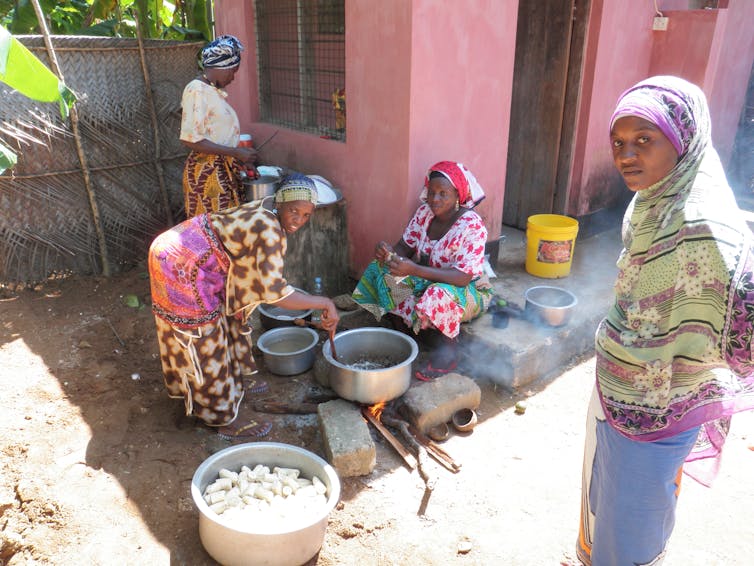News
Women’s participation is essential to achieve global climate targets

We are engineers and scientists. We happen to be women, but first and foremost we are citizens of this planet who believe that immediate action is imperative to address the climate emergency.
The reality is that climate change affects women and men differently. Across the world, particularly in less economically developed countries, extreme weather events associated with climate change – such as droughts and floods – have harsher effects on more vulnerable people, many of whom are women. In fact, of the more than 125 million people in need of humanitarian assistance, over 75% are women and children.
Discussions at the ongoing UN climate summit, COP26, in Glasgow recognise this. COP26 Gender Day, on 9 November, aimed to highlight how women’s voices and participation are indispensable in the fight against climate change.
Restricted rights, lack of access to financial resources, education, training and technology, and limited access to the forums where political decisions are made, are barriers to many women contributing to climate action. And because of these barriers, women’s experience that could help communities adapt to changing environmental conditions is often ignored.
The jobs that women are saddled with in their local communities and homes, such as cooking, washing and food processing, often involve heat and electricity use. In many developing countries or conflict zones, women resort to using firewood and charcoal to provide affordable energy for these responsibilities. Forced dependence on these sources increases deforestation, and puts women and their families at risk of exposure to smoke and fire hazards.
Although leaders and concerned citizens worldwide have suggested that cleaner energy sources be used, this isn’t usually cheap or easy to do. In particular, many new technologies intended to address this problem are abandoned because the concerns of their potential users – in this case women – have not been factored in.

These concerns can include an inability to maintain the tech, fear of job losses if communities embrace the tech, and religious or cultural barriers related to using waste water or renewable fuels like faeces to generate energy. These challenges could be solved much faster if women’s voices were made central to the design process.
Women have also been at the forefront of the demand for reducing packaging and the need for recycling in homes. For example, calls to use refillable systems when buying groceries and household supplies cannot be successful without the primary users of these systems – usually women – championing the concept.
Education
Yet another challenge is the chronic underdevelopment of women’s talents in science, technology, engineering, maths and medicine (STEMM) – meaning fewer women end up leading climate innovation.
A century ago in the UK, as documented by the Women’s Engineering Society, talented women were actively excluded from engineering based on their gender. We are still tackling the cultural legacy from this today. For example, parents have long been more likely to aspire for their sons, rather than their daughters, to become engineers.
With half of the global population facing potential discouragement from pursuing scientific careers, it’s more important than ever to engage women with climate science so that the best possible clean technologies can be identified and implemented.
This needs to happen fast. We are rapidly running out of time to address the climate crisis. If we continue to limit people from participating because of their identity, such as their gender, then we are filtering out some of the brightest and most committed individuals who could, quite literally, change the world.

Encouraging more diverse groups of students to train in STEMM subjects is partly achieved by identifying and overcoming barriers to girls entering scientific careers, using gender equality strategies such as those proposed by the UK-led Athena Swan Charter. But this is just the first step. We then have to retain this diversity in the workforce.
To do this, tackling the internationally entrenched gender pay gap is key, in tandem with ensuring that skilled individuals whose careers have been interrupted with caring responsibilities are supported to re-enter their professions.
Leaders who speak out about these issues can have profound impacts on gender equality in the climate sector. An open letter from climate gender equality campaign SHE Changes Climate, supported by over 450 environmental leaders of all genders, highlighted and challenged women’s underrepresentation in COP26 negotiations.
This led to the establishment of the #5050Vision campaign “to ensure all delegations, for all climate negotiations, have at least a 50% representation of diverse women at their top levels”.
As researchers, we’ve worked on inclusive, innovative programmes like Humanitarian Engineering, which encourages students to consider things like gender equality and cultural context when designing technical solutions to problems. Programmes like these, which focus on positive social impact, tend to engage more gender diverse student cohorts, leading to better outcomes.
Unleashing the knowledge and capability of women across the globe is essential if we are to craft equitable, inclusive and sustainable climate change solutions for the benefit of all. Investment in this needs to be integral to the outcome of COP26. We cannot afford, in any sense, to perpetuate this loss of talent.

This story is part of The Conversation’s coverage on COP26, the Glasgow climate conference, by experts from around the world.
Amid a rising tide of climate news and stories, The Conversation is here to clear the air and make sure you get information you can trust. More.
Joanna Collingwood, Professor of Engineering, University of Warwick; Georgia Kremmyda, Professor of Civil and Environmental Engineering, University of Warwick, and Modupe Olufunmilayo Jimoh, Senior Teaching Fellow in Civil and Humanitarian Engineering, University of Warwick
This article is republished from The Conversation under a Creative Commons license. Read the original article.





















